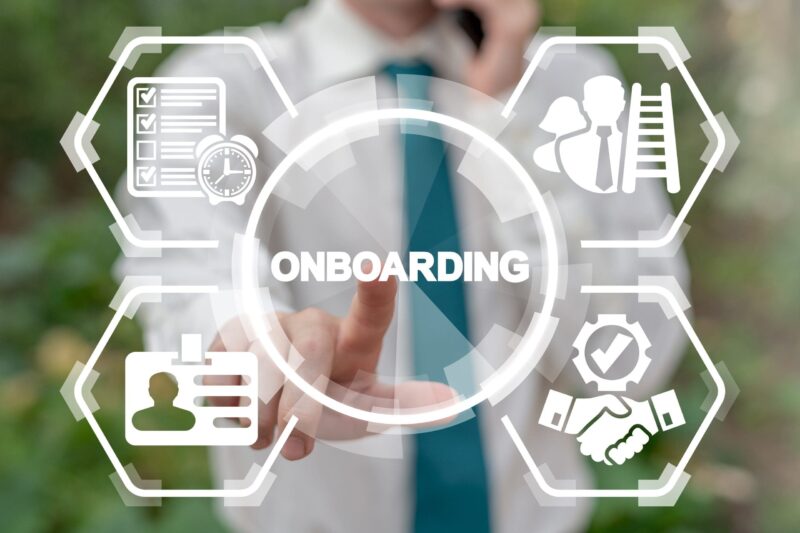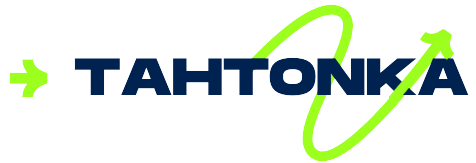Hiring someone new feels great until you realize how much time and effort it takes to get them fully productive. Most companies either rush training to save costs or overcomplicate it with endless manuals and meetings.
Neither approach works. The real goal is to create a repeatable, smart training system that builds competence fast, fits your budget, and doesn’t burn out your senior staff in the process.
Let’s go step by step through what that looks like in practice.
Step 1: Define What Success Looks Like for Each Role

Before anyone starts learning, they need to know what “good” looks like. Many businesses skip this step and end up teaching too much or too little.
Start with a Role Success Framework:
| Role | Key Outcomes | Metrics for Success | Timeframe |
|---|---|---|---|
| Customer Support | Handle tickets confidently | 90% of issues resolved without escalation | 4 weeks |
| Sales Representative | Close small accounts independently | First three sales closed | 6 weeks |
| Technician | Complete standard service calls | 95% completion with no rework | 8 weeks |
This table serves as both a roadmap and a contract of expectations. New staff see exactly what they’re aiming for, and trainers know where to focus their energy.
Step 2: Create Short, Repeatable Training Modules
Instead of long onboarding marathons, break training into bite-sized sessions. Most people retain more when training fits into short, repeatable segments.
For example:
- Day 1–2: Core company values, software logins, and basic workflows
- Week 1: Shadowing, short video guides, and first supervised task
- Week 2: Independent work with daily 15-minute check-ins
- Week 3–4: Full ownership of one task type, peer review, and feedback
Keep each module focused on one goal. Don’t overload them with theory. Each session should end with a clear, measurable task that proves they’ve learned something specific.
Step 3: Use Real Tasks from Day One

One of the biggest mistakes in onboarding is keeping new hires in the “learning zone” too long before letting them do real work. The best way to train is to let them contribute early, even on small tasks.
You can create low-stakes projects such as:
- Internal test assignments that mimic client work
- Updating old records or templates under supervision
- Managing a minor internal request with backup available
This builds confidence fast and gives immediate feedback loops. Real work creates real learning. People don’t absorb process documents nearly as well as they do when fixing an actual issue or submitting something tangible.
Step 4: Assign a Peer Buddy, Not Just a Manager
Managers are busy, and most lack the time to walk through every detail. That’s where peer learning shines. A buddy system pairs a new hire with an experienced colleague who acts as the first point of contact for daily questions.
The benefits go beyond faster training:
- New employees integrate into the culture more naturally.
- Senior staff refine their own skills by teaching.
- Managers can focus on higher-level coaching.
It’s a small commitment that often cuts onboarding time dramatically. The key is to pick mentors who are patient, not just skilled.
Organizations that work with executive advisory partners like Ned Capital Recruitment often integrate mentorship frameworks that mirror the peer-buddy approach at board level.
Step 5: Record Once, Use Often

Repetition drains time. If you’re explaining the same steps every week, you’re doing it wrong. Standardize by recording or documenting recurring training material.
Use a training library that includes:
- Short screen-recording videos for common workflows
- FAQ documents for internal tools
- Quick-reference sheets with step-by-step instructions
- Role-specific checklists
Tools like Loom or Notion work perfectly for this. Once recorded, that content saves hours of explaining per hire and ensures every new person gets the same baseline quality.
Step 6: Blend Self-Paced and Live Training
Not everything needs to happen in real time. Some topics (like compliance or tool basics) fit perfectly into self-paced modules. Others, like communication or customer service, need live interaction.
A balanced onboarding schedule might look like:
| Training Type | Best For | Example |
|---|---|---|
| Self-paced video | Software tutorials, product knowledge | Learning CRM tools |
| Group session | Company culture, safety, compliance | Weekly orientation call |
| 1-on-1 coaching | Performance feedback, goal setting | Monthly check-in with manager |
| Peer learning | Informal Q&A, real-world tips | Shadowing or Slack support |
Mixing both modes keeps things flexible while maintaining accountability. Self-paced learning respects autonomy; live training builds relationships.
Step 7: Automate the Boring Stuff

Most administrative training tasks can be automated. You don’t need to manually track who finished what. Use digital tools that manage the process for you.
Look for tools that handle:
- Automatic reminders for incomplete modules
- Quizzes that track comprehension
- Progress dashboards for managers
- Template assignments per department
Platforms like Trainual, TalentLMS, or Google Workspace templates can do this efficiently. Automation doesn’t replace human guidance; it simply frees humans to focus on mentoring.
Step 8: Train Managers How to Train
You can’t expect consistent results if every supervisor teaches differently. Managers need structure too. Create a brief “train-the-trainer” guide that sets ground rules for how knowledge is passed on.
Include principles like:
- Keep instructions simple and repeatable.
- Confirm learning through output, not just attendance.
- Use feedback loops instead of long lectures.
- Prioritize clarity over perfection.
Once managers follow the same model, training quality becomes predictable. You stop depending on individual teaching styles and start building an actual system.
Step 9: Track Early Performance Patterns

Onboarding doesn’t end once someone finishes their modules. The next step is to observe early indicators of whether the training worked.
Track:
- Task completion speed in the first 60 days
- Error rates on standard processes
- Support ticket frequency (how often they need help)
- Peer or client feedback
When you notice weak spots, don’t rush to blame the employee. Instead, adjust the training process that produced that gap. Each new hire gives data that improves the next cycle.
Step 10: Encourage Active Reflection
People learn faster when they reflect on what they’re doing. Encourage short written or verbal reflections at the end of each week.
Questions that work well:
- What tasks felt easiest or hardest this week?
- What steps still feel unclear?
- What do you wish you had learned earlier?
- What did you teach yourself by experimenting?
This method strengthens memory and gives management valuable insight into the onboarding experience. Reflection doesn’t need to be formal; it just needs to happen regularly.
Step 11: Build an Onboarding Feedback Loop

Most companies forget that training should evolve. Keep a rolling feedback system between new hires, their mentors, and HR.
The easiest format:
- After week one: Ask if instructions were clear.
- After month one: Ask if they feel confident in daily work.
- After three months: Ask what they’d change about onboarding.
Compile those notes quarterly and update your materials. It’s not about big overhauls, it’s about continuous trimming and tuning.
Step 12: Keep Learning Visible in the Workplace
Training doesn’t end once the formal program stops. To maintain momentum, make learning visible across the company. Recognition drives consistency.
You can do it by:
- Highlighting milestones (“Maria completed her first client project!”)
- Sharing mini-lessons or case studies in team meetings
- Offering small rewards for internal course completions
It signals that training is not a chore but part of your culture. When learning is normalized, everyone keeps improving without being pushed.
Step 13: Evaluate ROI Like Any Other Investment

Training is a cost center only if you never measure its outcomes. Treat it like any strategic project; calculate how much time and money it saves.
A simple ROI formula:
ROI = (Productivity gain – Training cost) / Training cost
Example:
- Cost to train one employee: $1,200
- Estimated value of productivity gained in 3 months: $4,000
- ROI = (4,000 – 1,200) / 1,200 = 233%
Even rough estimates help you prove value to stakeholders and justify scaling your system.
Step 14: Trim Anything That Doesn’t Drive Output
Every training system collects clutter over time: extra meetings, long videos, outdated PDFs. Review your materials twice a year. Ask a few blunt questions:
- Is this information still accurate?
- Does it actually help a new person perform faster?
- Can it be simplified or merged?
Cut anything that doesn’t directly drive job performance. Clarity wins over volume.
Step 15: Make Culture Part of the Training, Not an Add-On

A well-trained employee who doesn’t align with company culture will still cause friction. Culture should be part of onboarding from day one.
Ways to do it naturally:
- Include casual lunch sessions with different departments.
- Share real examples of how teams solve problems.
- Encourage small wins early to build belonging.
- Make values part of decision-making discussions, not slogans on slides.
When culture is integrated early, new hires settle faster and stay longer.
Step 16: Use Shadowing Strategically
Shadowing works well, but it needs structure. Watching someone work aimlessly isn’t training, but an observation without purpose.
Structure it like this:
| Shadowing Phase | Objective | Duration |
|---|---|---|
| Observation | Watch process and ask questions | 1–2 days |
| Assisted practice | Complete steps together | 2–3 days |
| Independent with review | Perform tasks solo, get feedback | 1 week |
This staged approach converts passive watching into active learning. It also limits the time senior employees spend mentoring, keeping costs low.
Step 17: Prepare for Common Mistakes Early
Even well-planned training has rough spots. Anticipate the most common issues and neutralize them early.
Typical traps:
- Overloading the first week with too many systems
- Forgetting to assign clear points of contact
- Assuming prior knowledge without confirming it
- Failing to communicate how success is measured
Document those risks in your internal training guide. Preventing a mistake once saves you hours of repair later.
Step 18: Keep It Human

No amount of software replaces a genuine connection. People learn faster when they feel safe to ask questions and make small mistakes. Keep space for human interaction, even in automated systems.
A quick daily check-in or a message saying “how’s it going?” often solves small frustrations before they grow. Psychological safety matters as much as process clarity.
Step 19: Refresh Training Materials Once a Year
Every company evolves. Tools change, policies shift, customer expectations grow. Outdated training quietly sabotages performance. Set a fixed annual review date for all materials: videos, guides, templates, and tests.
Make one team responsible for it and keep a version log. A single update round per year keeps your onboarding sharp without endless tinkering.
Step 20: Create a Scalable System
Once your process works well for ten hires, it should also work for fifty. Scalability comes from templates, ownership, and rhythm.
To make it scalable:
- Standardize core documents for every department.
- Assign one person to own each section of the onboarding system.
- Set quarterly reviews to catch outdated material.
- Build a folder or workspace where everything lives permanently.
Final Thoughts
Training doesn’t have to be expensive or slow. It just needs to be designed with intention. Start small, document everything that works, and refine what doesn’t. Every time you hire, your process should feel easier than before.
When you train with precision, new staff start contributing faster. They feel supported, managers stay sane, and the company saves both time and money. That’s the sign of a mature organization, one that grows without losing control of how people learn to do great work.

